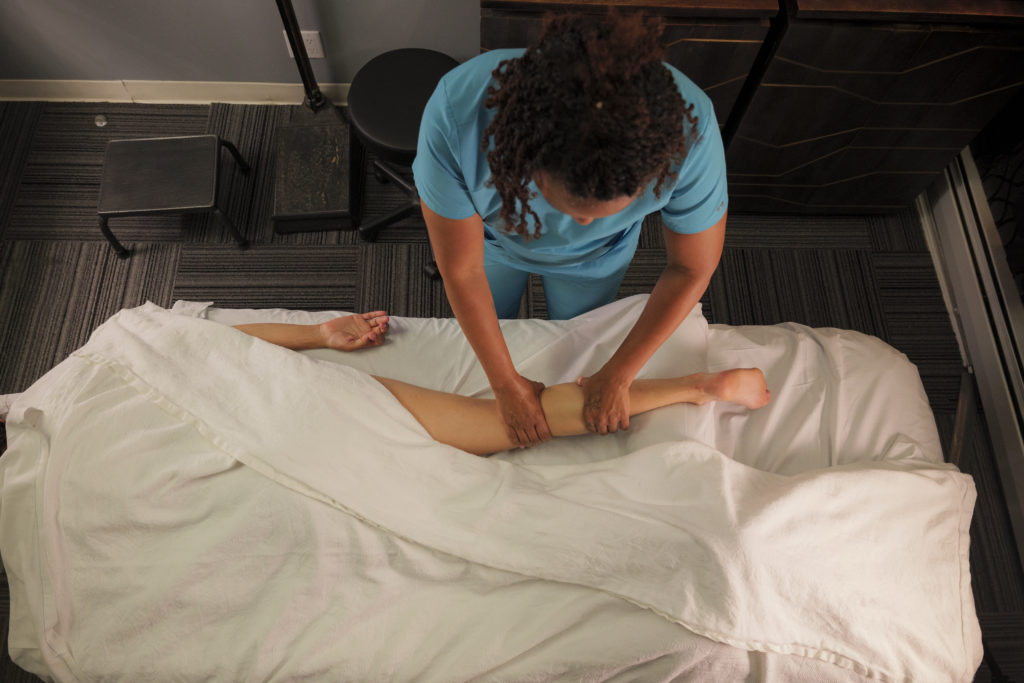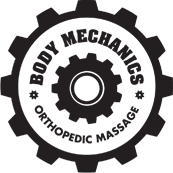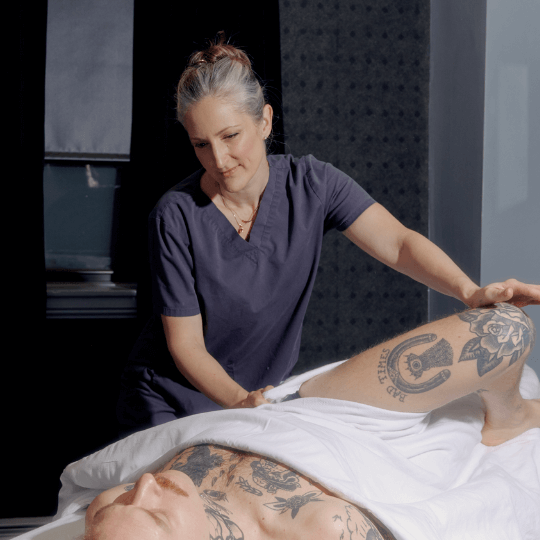Many years ago – in what seems like the Dark Ages, I was in school to become a registered massage therapist (RMT) in Ontario, Cananada and was taught a standard massage treatment for plantar fasciitis and runners.
The massage therapy mostly focused on the foot. It involved stretching the plantar aspect of the client’s foot by cranking the toes into extension forcefully and pulling the bottom of the foot tight. Then while your client was face down and you had this position achieved, you were to take your thumbs or even an elbow and dig away at the tissue until you had eradicated all of the ‘granular’ scar tissue.
I quite clearly remember my teacher saying that we needed to then ice the bottom of the foot immediately, as he slapped an ice pack on my friend who was a runner and triathlete. I remember her gingerly limping off post-treatment. I can’t remember how long it was before she ran again after that. Who knows? No explaination was ever given for the method of treatment. They never explained that the purpose was to break down tissue and re-injure the site to facilitate healing. But it surely stank of that mode of treatment, and it did not make sense.
Why do we need to hurt someone to make a massage work?
Now let me ask you a question, a question that I will likely repeat in multiple blog posts: If you come to me, as a medical practitioner, and you complain of a black eye, and I punch you in the same eye and tell you it will facilitate healing, does that make sense? No! So why is it acceptable in massage? Certainly it applys to plantar fasciitis and massage.

Years later, I now teach a very different method to address runner’s issues to the therapists at Body Mechanics. It is far more gentle, treats the entire lower leg as well as upper (depending on time constraints), engages the brain by moving the body, and involves a referral to PT or exercise depending on the level of experience the runner or athlete has.
The Plantar Fasciitis Massage Treatment
When assessing, we are looking at a far wider spectrum of dysfunction than simply plantar fasciitis. Indicators that there might be an issue or impending problem include heel pain, pain in the bottom of the foot, and sometimes calf pain. Of course with any assessment, we screen to rule out red flags as well. The symptoms listed above can also correlate with a recent increase in mileage or speed work for runners, or a weight change, plyometrics or recent changes in health. If there is no connection to the assessment you’re probably going to want to refer out regardless to check for bone Spurs and tendon issues.
For the purposes of this blog let’s focus on the lower leg. I generally combine in-prone, general massage with gentle pin and stretch. Having the patient flex and extend the ankle as well as pronate and supinate. I am looking to see a full articulation of the foot and ankle. Often you will see that those with foot pain also have poor articulation. Resistance in these areas can be added to help cue the body into moving better. Once we have warmed the area with massage and movement, adding resistance to those movements is helpful. While many massages focus on the muscles, at Body Mechanics Orthopedic Massage I like to include tendon work, like “bowing,” as well. We want soft supple moving parts so practicing flexibility is helpful.
When treating the bottom of the foot, I no longer use that awful stripping technique that requires an ice pack. Instead, I use a hot towel to warm the foot and then use a deeper gliding technique across the sole, while I have the patient flex and extend the toes, or spread them and let them fall to neutral. Here, if things are still not moving well we would add in some mobilizations between the tarsals and resisted exercises for the toes.
As for home care, if the problem persists, we will refer you to a physical therapist and if it does not, then we would advise you to a program of foot and calf strengthening as injury prevention. As a massage therapist, I am not rehabbing you. My job is to get you more comfortable while your body does what it does and what it was designed to do. It is adaptive. It will adapt, with or without me.
Summing up…
A warm towel? Simple exercises? No digging thumbs or elbows into the client’s foot? This is a far cry from the painful techniques that I was taught! No one is limping painfully off our tables before a run. The clinical outcomes seem just as effective and I’d say are more beneficial. If you are looking for a therapist who will not hurt you to help you, ask questions before you book. Look for someone who listens well and has a wide variety of techniques at their disposal. It would be a shame to miss your next run due to foot pain… especially if it was caused by the person trying to help you.
Check out more on plantar issues
- March 2025
- February 2025
- January 2025
- December 2024
- November 2024
- October 2024
- September 2024
- August 2024
- July 2024
- June 2024
- April 2024
- March 2024
- February 2024
- January 2024
- November 2023
- October 2023
- September 2023
- July 2023
- April 2023
- March 2023
- January 2023
- October 2022
- June 2022
- May 2022
- March 2022
- February 2022
- January 2022
- December 2021
- November 2021
- October 2021
- September 2021
- August 2021
- July 2021
- June 2021
- May 2021
- April 2021
- March 2021
- February 2021
- January 2021
- December 2020
- November 2020
- October 2020
- September 2020
- August 2020
- June 2020
- March 2020
- February 2020
- January 2020
- November 2019
- October 2019
- September 2019
- August 2019
- June 2019
- May 2019
- April 2019
- March 2019
- October 2018
- September 2018
- June 2016
- April 2016
- February 2016
- January 2016
- September 2015
- August 2015
- July 2015
- May 2015
- April 2015
- March 2015
- January 2015
- August 2014
- July 2014
- June 2014
- April 2014
- March 2014
- February 2014
- January 2014
- December 2013
- November 2013
- September 2013
- August 2013
- anxiety (1)
- Back Pain (11)
- Body Mechanics (23)
- Body Mechanics Blog (13)
- Bursitis (1)
- business (6)
- Carpal Tunnel (1)
- ceu's (1)
- Continuing Education Credit (1)
- COVID (1)
- Cupping (1)
- deep tissue (4)
- dyi (1)
- Foot Pain (1)
- General (45)
- healthcare (47)
- insurance (2)
- lymphatic massage (2)
- Massage Education (1)
- massage NYC (37)
- massage therapy (46)
- NYC Marathon (4)
- Orthopedic Massage (36)
- pain management (11)
- pain managment (3)
- pain science (7)
- Plantar Fasciitis (1)
- Plantars Fascitis (1)
- Prenatal Massage (11)
- preventative care (14)
- relaxation (4)
- rub (1)
- Runners Massage (4)
- running (4)
- sleep (2)
- Sports Massage (23)
- stress (2)
- Stretches (11)
- subacute (1)
- swedish massage (1)
- tendons (1)
- Therapist Profile (6)
- TMJ Massage (4)
- Training (1)
- treatment techniques (1)
- Uncategorized (34)
- World Health Day (1)

